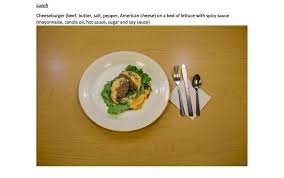Table of Contents
What You Need To Know About Calories In Vs Calories Out
Calorie-wise, there’s more to life than meets the eye.
Finally, weight loss is all about energy balance; if you consume fewer calories than what your metabolism burns off, fat cells begin to melt away.
Maintaining a clear understanding of how many calories you require to stay healthy is paramount.
What are calories?
Calories are the fuel the human body uses for everyday functions like movement and thinking. You can get them from food and drinks, or through physical activity like exercising. The amount of calories needed each day depends on your age, gender, and size.
The word calorie is derived from the Latin calor, meaning “heat.” A calorie is an energy unit first defined by Nicolas Clement, a French chemist and physicist.
He used a gram of water to measure temperature changes in energy. He discovered that one calorie is the amount of heat required to raise one gram of water by one degree Celsius.
In dietary terminology, this calorie is known as a kilocalorie (sometimes spelled with an uppercase ‘C’). It equals 1000 physics calories – however, this number is too small to accurately reflect food’s heat capacity.
Nutrition labels typically display calories as 1,000 kilocalories (kcal) or kilojoules (kJ). To convert calories to kJ, multiply them by 4.2.
People consume calories from a variety of foods and drinks, but it’s essential to choose the right ones. Consuming too many calories can lead to weight gain and poor health; getting an appropriate balance of calories from nutritious foods and drinks helps keep you healthy.
What is a nutrient?
Nutrients are essential elements that sustain life and growth. They are typically obtained through food or liquid intake.
Nutrients are divided into macronutrients and micronutrients. Macronutrients, which must be consumed in large amounts, include carbohydrates, fats and proteins.
Carbohydrates provide energy and are the main source of glucose in your blood, which is used by your brain and other organs for proper functioning. Proteins are necessary for growth and repair of tissues, while fatty acids form cell membranes.
Micronutrients, such as vitamins and minerals, are essential in small amounts. They play an important role in biochemical and physiological processes like vascular functioning or nerve conduction.
Vitamins aid your body in producing hormones and enzymes, while minerals such as calcium, iron and vitamin C are necessary for normal muscle development, bones, tendons and ligaments.
Nutrients, often overlooked in the nutrition discourse, are an integral component of what it means to have a balanced diet. But how much of each nutrient you require depends on several factors like your age, activity level and gender.
Adults require more calories than children and seniors do, due to the fact that adult bodies are more efficient at using food for energy and can burn it faster than younger or elderly bodies can.
What is a nutrient-dense food?
Nutrient-dense food refers to any food that provides an abundant supply of essential vitamins, minerals and other vital nutrients per calorie consumed. This is beneficial when it comes to weight loss because you’ll get more value from each calorie you consume.
Nutrient-dense foods are low in fat, salt and sugar but high in vitamins, minerals, fiber, antioxidants, phytochemicals and other important nutrients your body requires to stay healthy. These micronutrients are known as micronutrients; they help reduce your risk for chronic illness by providing essential building blocks of health.
Many of the most nutrient-rich foods are whole or minimally processed. This means they contain little to no added sugars, salt, or refined grains.
Some examples of nutrient-rich foods are fruits, vegetables, legumes, nuts, seeds and whole grains. Each one provides various essential vitamins and minerals as well as being an excellent source of protein.
Nutrition experts suggest choosing a variety of whole foods to ensure you get an balanced and nutritious diet. These include fruits, veggies, legumes and other whole grains as well as lean meat cuts, fish, poultry and eggs.
Though some of these nutrient-rich foods can be pricey, you can find ways to buy them at a cost you feel comfortable with. Whether you’re in search of an energy boosting smoothie to start the day, protein packed snacks for snack time or delectable desserts – stocking up on nutritious items is worth investing in!
What is a nutrient-poor food?
Nutrient-poor foods are calorically dense but lack essential vitamins, minerals and antioxidants found in more nutrient-rich options. Examples include sugary beverages, sweet pastries, cakes and cookies, processed meats and high-fat dairy items like cheese and yoghurt (ECFA).
Nutrient-poor foods are those which provide more calories than their nutritional value and fail to meet your body’s nutrient requirements. Therefore, these should be avoided at all costs.
Calorie density is important, but nutrient content should also not be overlooked. Calories are only the tip of the iceberg if you don’t eat enough nutritiously dense foods to ensure optimal health benefits.
To maximize your nutritional intake, aim to consume approximately 50% of your daily calories from nutrient-dense foods and the remaining 50% from less nutritious options. When selecting what to eat, choose from a wide variety of fruits, vegetables, whole grains, beans and nuts; while limiting high-fat meats, sugary drinks and fast foods.
To improve your health, incorporate more real food into your meals – especially plants (vegetables, fruits and whole grains) as well as lean proteins. Furthermore, pay attention to both the quality and amount of each nutrient you consume. Making informed food decisions that provide plenty of both good and beneficial elements will give you the edge for optimal performance.
What is a nutrient-rich food?
Nutrient-rich food is defined as one that provides abundant health-promoting elements, such as vitamins and minerals, without excessive added sugars, saturated fat, or sodium (salt).
Fruits and vegetables are often considered to be nutrient-rich foods due to their fiber, antioxidants, and phytochemicals that help safeguard your body against chronic illness.
Nutrient-rich foods may include whole grain products, low fat dairy, lean meats such as poultry or fish, and eggs. These can be consumed at meals or as snacks and have numerous health benefits to benefit your overall wellbeing.
To determine if a product is nutritionally dense, look for the Nutrition Facts label on the package. This will indicate how many servings of each nutrient there are in each serving as well as the calories per serving size.
Nutrient-rich foods like fresh fruits, vegetables and leafy greens are easily available. Not only do these items contain essential vitamins and minerals, but they can be eaten raw or cooked as well.
Yogurt is another nutrient-rich food, packed with calcium, potassium and protein for your body to use. Not only that but it helps boost your immunity and maintain muscle function as well.
Other nutrient-rich foods include whole grains, legumes and nuts. These low fat items provide plenty of fibre which may help you feel satiated more quickly and prevent overeating.
What is a nutrient-rich food pairing?
Nutrient-rich food pairings are combinations of foods that work together to boost each other’s nutritional content. Synergy between them makes it easier for your body to absorb essential vitamins and minerals – like when salt and pepper or peanut butter and jelly are combined.
Some nutrient-rich food pairings can enhance the absorption of essential vitamins and minerals, such as avocado and tomato, green tea with lemon juice, turmeric and black pepper, or cruciferous greens with salmon.
For instance, tomatoes contain lycopene, a fat-soluble antioxidant essential for eye health and immune system functioning. Research has even demonstrated that when eaten alongside an unsaturated fat like avocado, your body can absorb up to 50% more of this nutrient.
Elaine Magee, a registered dietitian in Boise, Idaho, notes that healthy fats not only increase dietary lipid absorption but also provide sustained energy after meals. Furthermore, omega-3 fatty acids found in cold-water fish like salmon may reduce your risk for heart disease and prevent blood clots by maintaining normal blood pressure, she explains.
Kotsopoulos recommends that to maximize iron absorption, which is a difficult nutrient to absorb, you should pair iron-rich plant foods (known as nonheme) with vitamin C-rich fruits and vegetables like red peppers. Vitamin C helps break down plant-based iron so it can be more readily absorbed into your bloodstream.




